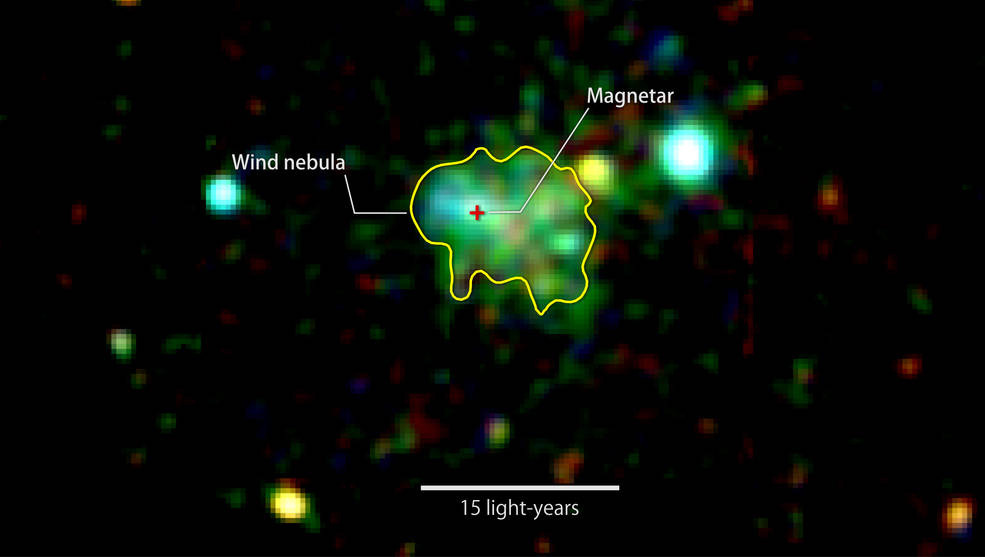Less than a year ago, a pulsar wind nebula generating extended X-ray emission was detected surrounding a magnetar (Swift J1834.9-0846). This was the first magnetar for which such a wind nebula was ever found. The main feature of this magnetar nebula was its large efficiency and size: About 10% of the rotational power of the magnetar was found to be emitted just in X-rays by the nebula, being steady for more than a decade, with a size exceeding 10 light years. This efficiency is about 5 times larger than what is typical for all other nebulae we know in our Galaxy.And magnetars are far from being the most powerful rotators among pulsars…
How could then a pulsar that dim power a nebula that bright?
Speculations would soon arise, with suggestions that the nebuale was powered by a yet-unknown mechanism that converts magnetic power into X-rays. But the solution was conceptually simpler:
By using a detailed radiative and dynamical code that studies the evolution of the nebula and its particle population in time, we find that Swift J1834.9–0846’s nebula (as well as others that could be detected pertaining to its class) can be explained as being rotationally powered, exactly as all other known PWNe are, if it is currently being compressed by the environment. Such compression is called reverberation. Reverberation introduces several new effects, the most important of which is the appearance of adiabatic heating, being increasingly dominant over the escape of particles and any other radiation loss as reverberation goes by. Such heating increases the particle population able to emit X-rays, in a short period of time. This effect is particularly notorious when pulsars are not so powerful, thus its impact on a magnetar nebula is extreme. Particles in a magnetar nebula do not lose, but gain (and gain a lot of) energy, during reverberation.
Reverberation naturally explains why this is the only magnetar nebula detected up to now (what in itself was a mystery) and provides estimates of Swift 1834.9–0846’s age.
Reference
